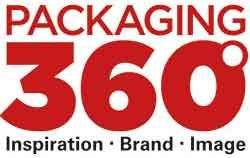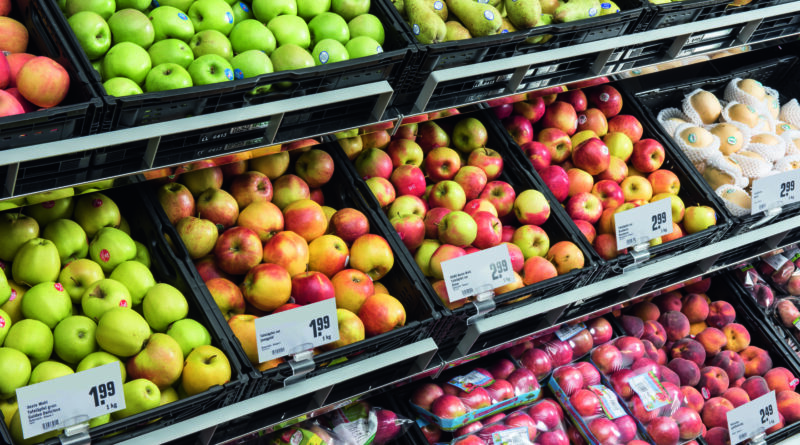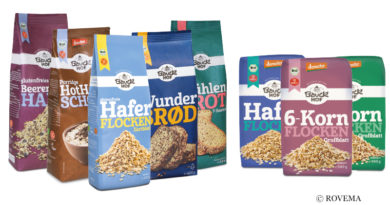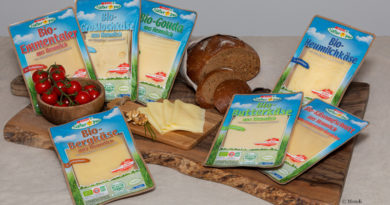Reusable For the Retail Trade
Reusable concepts in food retailing are on the rise. Sustainability in shopping is important to consumers and retailers. The HDE has published a special guide on this topic. The IFCO Group is one of the major reusable suppliers for fresh food -– but there are more packaging solutions that offer an alternative to single-use systems.
The climate protection campaign of the German Retail Association (HDE) has published a guide on the use of reusable packaging in food retailing in cooperation with the Brandenburg Packaging Reduction Advisory and Networking Office (BVVB) and the German Reusable Packaging Association. The free brochure helps retailers reduce the use of single-use packaging in various areas of their business.
““Reusable Iinstead of Mmore Wwaste. How Ffood Rretailers Ccan Aavoid Ssingle-Uuse Ppackaging”“ is the title of the guide, which provides retailers with information on how they can save on single-use packaging. ““The use of reusable concepts in food retailing is continuously increasing. Our guide aims to help retailers integrate them into their operations in the long term and , in particular, to provide more in-depth information to their employees,”“ explains Jelena Nikolic, project manager of the retail climate protection offensive.
Packaging reduction from B2B delivery to the point of sale is a highly topical issue. Since January 1, 2023, the obligation to offer reusable packaging has applied nationwide. Since then, retailers who sell takeaway food and beverages must also offer reusable containers for this purpose if they employ more than five people and have a sales area of more than 80 square meters. In the meantime, legal frameworks are stipulating the gradual reduction of disposable packaging.
For this reason, retailers, and manufacturers have been developing comprehensive concepts for reducing packaging or using environmentally friendly alternatives for many years. Packaging performs many important functions, especially in food retailing -– for example, in meeting hygiene requirements.
The issue is also playing an increasingly important role for consumers. In many areas, reusable solutions can now reduce the volume of packaging: fFrom fruit and vegetable crates to reusable jars for dairy products and reusable containers in the to-go or refill sector.
The now published guide ““Reusable Iinstead of Mmore Wwaste”“ provides a comprehensive overview of the current legal framework and hygiene requirements. It also explains when in exactly which cases exactly reusable solutions are more sustainable than plastic packaging, how individual reusable pool systems work, and how retail employees can properly communicate the benefits of reusable containers to customers at the point of sale.
The guide is available as a free download on the Climate Protection Initiative website. Print copies can be ordered free of charge by emailing klimaschutz@hde.de.
Example: reusable packaging containers
IFCO, which claims to be the world’s leading supplier of reusable packaging containers (RPCs) to retailers, supplied more than 2 billion reusable packages of fresh produce, meat, poultry, seafood, eggs, bread, and other fresh foods in 2022. With a circular economy business model based on the principles of waste reduction and reuse, IFCO enabled its supply chain customers to achieve significant environmental savings.
By sharing and reusing IFCO RPCs in global fresh produce supply chains, IFCO customers were able to save, among other things, 614,072 metric tons of CO2e -– the equivalent of traveling to the moon 8,900 times -– and 11.8 million cubic meters of water -– the equivalent of 4,736 Olympic-sized pools -– in 2022, the company said.
IFCO calculates and quantifies these science-based savings through independent scientific life cycle analysis (LCA) studies and rewards customers with for their share of the savings through annual environmental savings certificates. These certificates help growers, producers and retail customers of fresh food quantify the environmental benefits of IFCO’s solutions and demonstrate how they contribute to their own sustainability KPIs.




